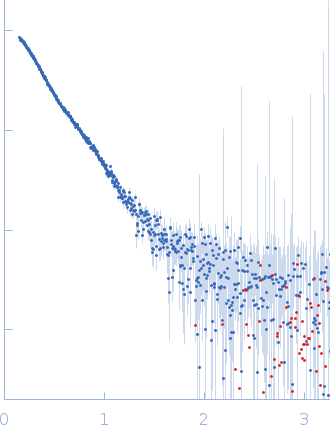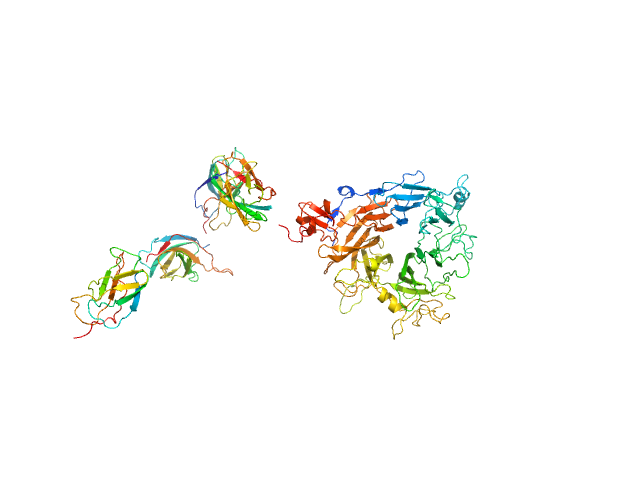|
Synchrotron SAXS data from solutions of the receptor tyrosine kinase MET in 50 mM MES, 150 mM NaCl, pH 6.7 were collected on the EMBL X33 beam line at the DORIS III storage ring (DESY, Hamburg, Germany) using a 1D Gas detector detector at a wavelength of λ = 0.15 nm (I(s) vs s, where s = 4πsinθ/λ, and 2θ is the scattering angle). Solute concentrations ranging between 1.2 and 9.1 mg/ml were measured . The data were normalized to the intensity of the transmitted beam and radially averaged; the scattering of the solvent-blank was subtracted. The low angle data collected at lower concentration were merged with the highest concentration high angle data to yield the final composite scattering curve.
Experimental temperature: UNKNOWN. X-ray exposure time: UNKNOWN.
|
|
 s, nm-1
s, nm-1
